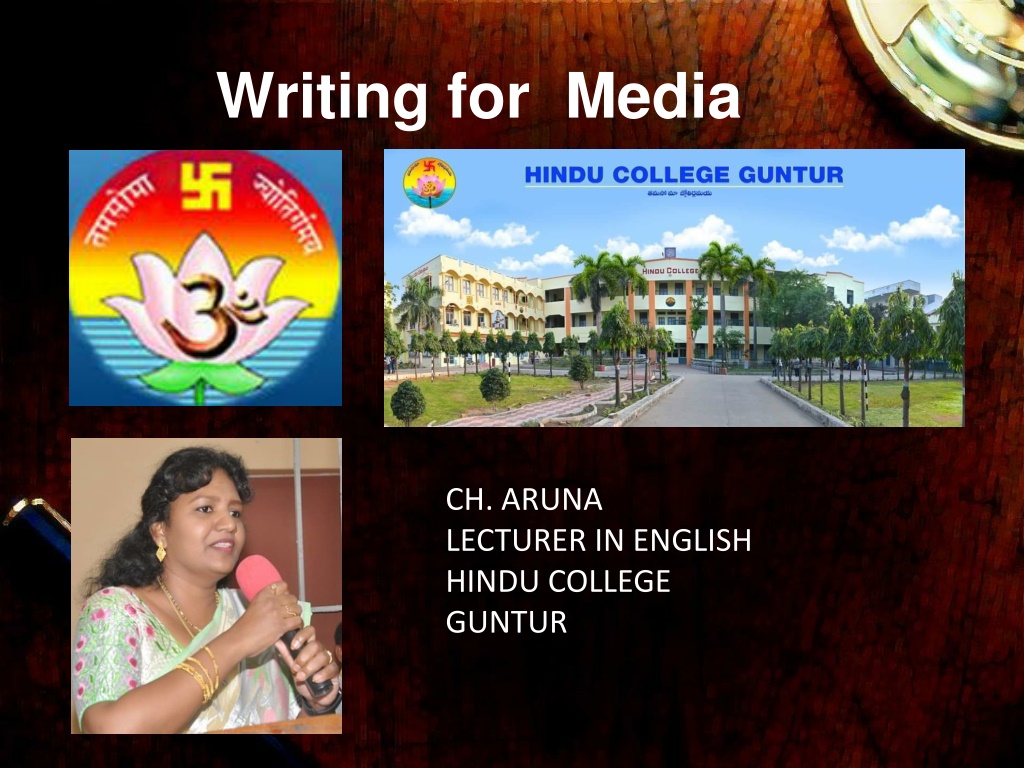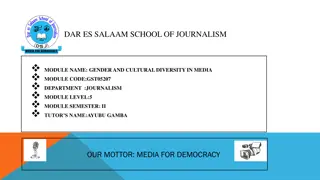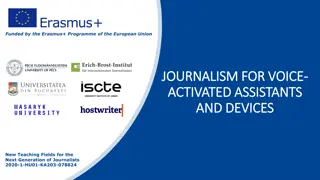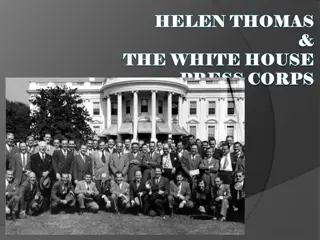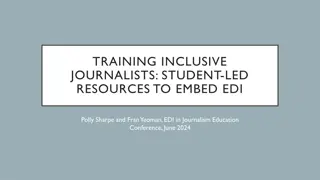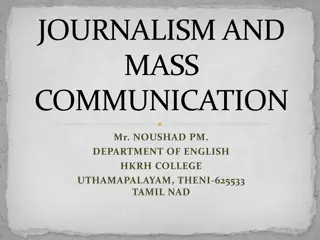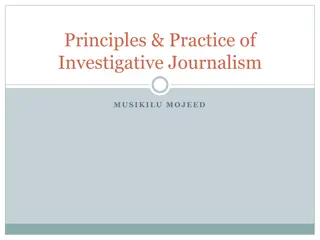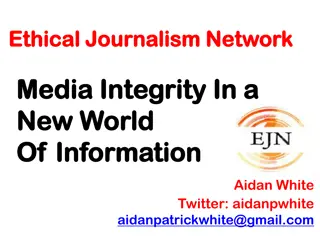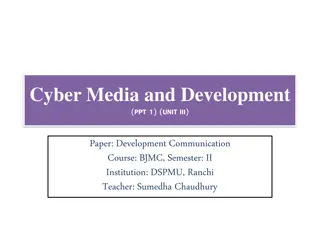Essential Guidelines for Effective Writing in Media and Journalism
Learn the crucial aspects of good writing, tools of the trade, subject knowledge, writing practices, simplicity in writing, and the chief goals for writers in the mass media. Embrace clarity, precision, simplicity, and accuracy in your writing for impactful communication.
Download Presentation

Please find below an Image/Link to download the presentation.
The content on the website is provided AS IS for your information and personal use only. It may not be sold, licensed, or shared on other websites without obtaining consent from the author. Download presentation by click this link. If you encounter any issues during the download, it is possible that the publisher has removed the file from their server.
E N D
Presentation Transcript
Writing for Media CH. ARUNA LECTURER IN ENGLISH HINDU COLLEGE GUNTUR
What is Good Writing? Clear, concise, simple and to the point Efficient - minimum words to make your point Precise - every word has a meaning Clear - leaves no doubt in reader s mind Modest - don t show off your intelligence
Know the Tools of the Trade Grammar Spelling Punctuation Dictionary Thesaurus
Know Your Subject Don t have to be an expert But have a clear idea Your readers must understand your content Don t know subject - research! Search engines Subject Matter Experts (SMEs) Book stores
Write It Down Just start writing (edit later) Develop writing habits Be a pro - meet your deadlines Edit and Rewrite Discipline Re-read Edit Rewrite (critically)
Write Simply Use simple words - key to clarity many instead of numerous use instead of utilize ease instead of facilitate Use simple sentences Brevity (edit to cut out unnecessary words)
Chief Goal of a Writer The chief goal of any writer for the mass media is to be accurate. The reason for an emphasis on accuracy is that people will not watch or subscribe to news that they believe to be inaccurate.
Clarity Clarity must be one of the chief goals of a writer for the mass media. Facts that are unclearly presented are of little use to the reader. Some tips: Keep it simple Avoid jargon Be specifc (who, what, when, where, why, and how) Check time sequences (ensure narrative sequence) Include transitions (story should flow logically)
Eliminate Jargon, Cliches, etc. Jargon - industry technical language Cliches - overused words and phrases Bureaucratese - misuse of language Vary sentence length Pay attention to nouns and verbs Transitions tie it together
Obscure Grammar Terms Parallelism She likes running, cooking, and swimming. Active/Passive Voice John throws the ball The ball is thrown by John. That and Which That introduces essential clauses. Which introduces non-essential clauses.
Writing for Mass Media Subject matter News, features, ads, letters, editorials Purpose Inform, entertain, persuade Audience Know your target audience (defines message)
Journalist Conventions Inverted pyramid Types of stories Balance and fairness Impersonal reporter Reliance on official sources Attributions and quotations
Text and Images Stories built around graphics Photos, logos, graphs, charts TV, mags, web Editors love graphics Graphics attract the reader s eye Breaks up the text (less intimidating to read)
AP Style: Capitalization Capitalize holidays, historic events, church feast days, and special events -- but not seasons Capitalize proper names of nationalities, peoples, races, and tribes Capitalize and place quotations around books, plays, poems, songs, speech titles, hymns, movies, TV shows, etc. when the full name is used
AP Style: Numbers Spell out both numbers one through nine and Arabic numerals for 10 and above Use commas in numbers with four or more digits except for years and addresses Numbers greater than a million may be rounded off and expressed: 2.75 million instead of 2,752,123 $2.35 million instead of $2,349,999
AP Style: Punctuation Colon used in clock time 9:15 a.m., 10 a.m. (not 10:00 a.m.) Hyphen used in phrasal adjectives 7-year-old boy, a little-known man Combinations of a number plus a noun measurement 3-inch bug, 6-foot man, two-man team Hyphen always used with the prefix ex Ex-president, ex-chairman Hyphen not used with adverb ending in ly Comma omitted before Roman numerals and before Jr. and Sr. in names
AP Style: Names & Titles Identify people in the news with first and last name Use full name in first reference, last name rest of time Richard Cooper, then use Cooper rest of time Titles before names - capitalized Chairman and CEO, Bob Stanwick Titles following names - not capitalized Linda Bellweather, president of ABC Company
Finally Writing is a process Research, create, write, edit, proofread Writing requires discipline Be patient and stick with it Writing is building Word by word, sentence by sentence, etc. Finally sit down and write
